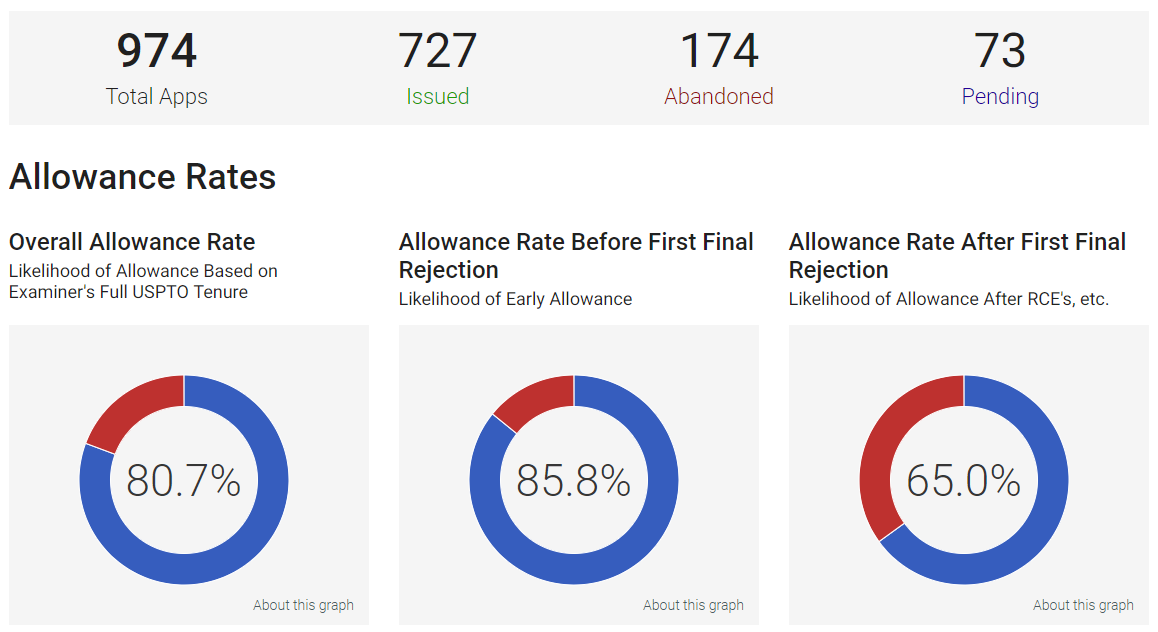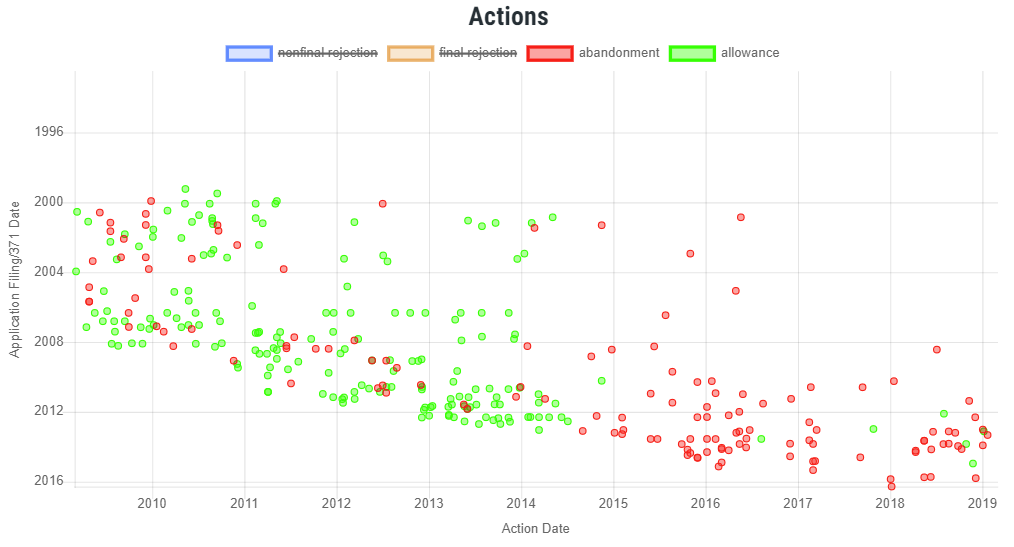It should surprise no one that I think examiner statistics are useful (otherwise why would I waste time blogging about them or building BigPatentData Examiner Statistics). But thinking they are useful1 is a far cry from thinking they are some sort of silver bullet (the werewolf killing kind, not the “hmm, this rocky mountain water tastes a little bit like beer” kind).
Like most legal technology tools, examiner analytics are most useful in the hands of skilled practitioners who can use them in combination with their own experience and knowledge to glean useful insights. It’s tempting to boil an examiner down to a single number (or color, perhaps ;-)) and declare that anybody can now use them to make good “data-driven” prosecution decisions. But I just don’t think it works like that. I am not saying that patent prosecutors need to bust out some Excel pivot tables and the old TI-83 sitting there in the desk drawer, but I think it is typically more nuanced than a single one-size-fits-all value.
Take for example, the metric that is most tempting to use as one-size-fits all: examiner allowance rate. On one hand, Examiner allowance is great because it goes straight to the heart of the matter: does this examiner allow patents or not? Moreover, there is no black box algorithm (surely to be labeled “AI” in marketing materials) that goes into calculating an examiner’s allowance rate. Simply divide her allowances by the sum of her allowances and abandonments, and there you have it. Allowance rate is so simple there is no way it can mislead us, right? Not quite. I would say even at its most basic, there are three variables to unpack when looking at allowance rate:
- What time frame are we looking at?
- What counts as an “allowance”?
- What counts as an “abandonment”
The time frame over which an examiner’s allowance rate is counted
This first variable in the allowance rate calculation is the time frame over which it is calculated. When it comes to allowance rate, is like the late(???) great(???) Ms. Paula Abdula once said: “What have you done for me lately?” This is particularly true anytime there is a major shift in the law (or the “interpretation” of it, depending on who you ask), such as with our good friend Alice.
Take, for example, examiner Richard Weisberger (whom I chose somewhat randomly from art unit 3690, but I could have chosen any of dozens of others). If you were to look at his lifetime allowance rate on Examiner Ninja (which many many people are still using despite the fact that it has not been updated in years), you would see the following:
If you take these numbers at face value, you might be in for a rude awakening, because here is what Richard Weisberger has been up to lately:
What is an allowance?
A more subtle nuance to examiner allowance rate is: what counts as an allowance? For the BigPatentData examiner tool, allowances are exactly that – allowances. An application does not have to grant for it to be counted as an allowance. Why? Because often it is the applicant, rather than the examiner, that prevents the patent from issuing by, for example, filing an RCE to submit an IDS or by simply not paying the issue fee (which happens insanely often and I intend to blog about in the near future — don’t forget to subscribe!).
What is an abandonment?
As for what counts as an abandonment, this seemingly straightforward question is complicated by the fact that PTO has at least 9 different classifications of abandonment. BigPatentData counts only: (1) express abandonments during examination; (2) abandonments for failure to respond to an office action; and (3) abandonments after the board of appeals. Among the not-counted types are: (1) abandonments for filing an RCE, (2) abandonments for failure to pay the issue fee, and (3) abandonments for failure to correct informalities.
I could go on with other metrics, but I think you get the point. DO use examiner metrics to aid in your prosecution strategy, but DON’T get lulled into looking at your examiner as a stoplight. Here is a more nuanced approach.
1And charging a modest price that is in proportion to their usefulness, in case you were curious 😉




